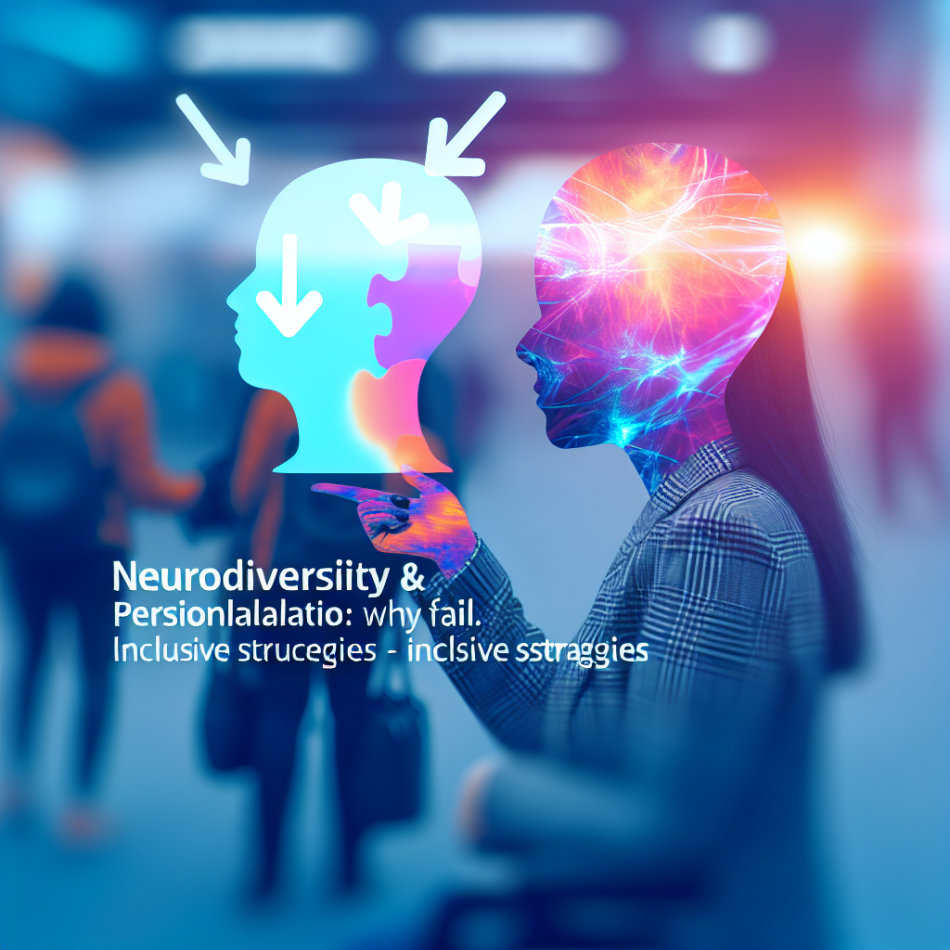Embracing Neurodiversity: Why Personalisation Trumps Assumptions
Neurodiversity encompasses a spectrum of cognitive experiences, from autism and ADHD to dyslexia and beyond. While awareness grows, a critical truth remains overlooked: strategies that empower one neurodivergent individual may overwhelm another. This article explores why personalisation—rooted in dialogue and respect—must replace assumptions. By prioritising individual needs over generalised solutions, we foster inclusivity that truly works. Let’s delve into why asking, not guessing, is the only path forward.
Understanding Neurodiversity: Beyond a Single Narrative
Neurodiversity recognises that brains function in varied, equally valid ways. However, the term often gets reduced to stereotypes: the “gifted autistic savant” or the “hyperactive ADHDer.” In reality, neurodivergent experiences are as diverse as the individuals themselves. Sensory sensitivities, communication styles, and executive functioning challenges differ vastly. For example, one autistic person might thrive in structured routines, while another finds rigidity stifling. Similarly, an ADHDer could excel in dynamic environments but struggle with tasks requiring sustained focus. Recognising this complexity is the first step towards meaningful support.
The Problem with Assumptions in Neurodivergent Spaces
Assumptions—however well-intentioned—often stem from limited understanding. A teacher might dim classroom lights to accommodate sensory needs, unaware this could exacerbate anxiety for a student reliant on visual cues. Employers may offer flexible hours to support ADHD focus, not realising some thrive under time-bound structures. Such missteps occur when solutions are designed for, not with, neurodivergent individuals. Worse, they reinforce the harmful idea that there’s a “right way” to be neurodivergent, sidelining those who don’t fit the mould.
Why Personalisation Builds Inclusivity
Personalisation shifts the focus from “fixing” to understanding. It acknowledges that needs fluctuate with context, energy levels, and even time of day. For instance:
- A non-speaking autistic person might prefer text-based communication at work but use assistive technology at home.
- An employee with ADHD could benefit from noise-cancelling headphones during deep work but thrive in collaborative, fast-paced meetings.
By treating preferences as dynamic, personalisation fosters autonomy. It also dismantles the pressure to conform to neurotypical standards, allowing neurodivergent individuals to define success on their terms.
Practical Strategies: How to Ask, Not Guess
Effective personalisation starts with curiosity. Here’s how to approach it:
- Use open-ended questions: Instead of “Do you need quiet space?” ask, “What environment helps you focus best?”
- Normalise flexibility: Make it clear that preferences can change. Check in regularly without making it burdensome.
- Prioritise active listening: Avoid interpreting needs through a neurotypical lens. If someone says, “I need clarity,” ask what that looks like for them.
- Respect boundaries: Some may not feel comfortable disclosing specifics. Offer options without demanding justification.
These practices create psychological safety, ensuring support aligns with individual realities.
In Practice: Case Studies in Personalised Support
Consider Maya, a graphic designer with autism. Her employer assumed she’d dislike client meetings and assigned her solo tasks. Overwhelmed by isolation, Maya proposed a hybrid approach: preparing visuals in advance and joining meetings via chat. This small adjustment leveraged her strengths while respecting her communication style.
Similarly, a university student with ADHD struggled with deadlines. Instead of generic extensions, his tutor collaborated with him to break projects into micro-tasks with interim check-ins. The result? Improved productivity and reduced anxiety.
Both examples highlight how tailored solutions outperform one-size-fits-all assumptions.
Overcoming Challenges in Personalisation Efforts
Personalisation isn’t without hurdles. Time constraints, lack of awareness, or fear of “getting it wrong” can stall progress. To navigate this:
- Educate teams: Training sessions on neurodiversity dispel myths and equip staff to ask informed questions.
- Leverage feedback loops: Anonymous surveys or peer support groups provide insights into what’s working—and what isn’t.
- Start small: Pilot adjustments in specific departments or classrooms before scaling up.
Remember, imperfect action beats inaction. The goal is progress, not perfection.
Conclusion: The Power of “Nothing About Us Without Us”
Neurodiversity thrives when individuality takes centre stage. Assumptions, even benevolent ones, risk erasing the very people they aim to support. By prioritising personalisation—asking, listening, and adapting—we create environments where neurodivergent individuals aren’t just included but empowered. Whether in workplaces, schools, or communities, the message is clear: always ask, never guess. In doing so, we move beyond token inclusivity to genuine belonging.
